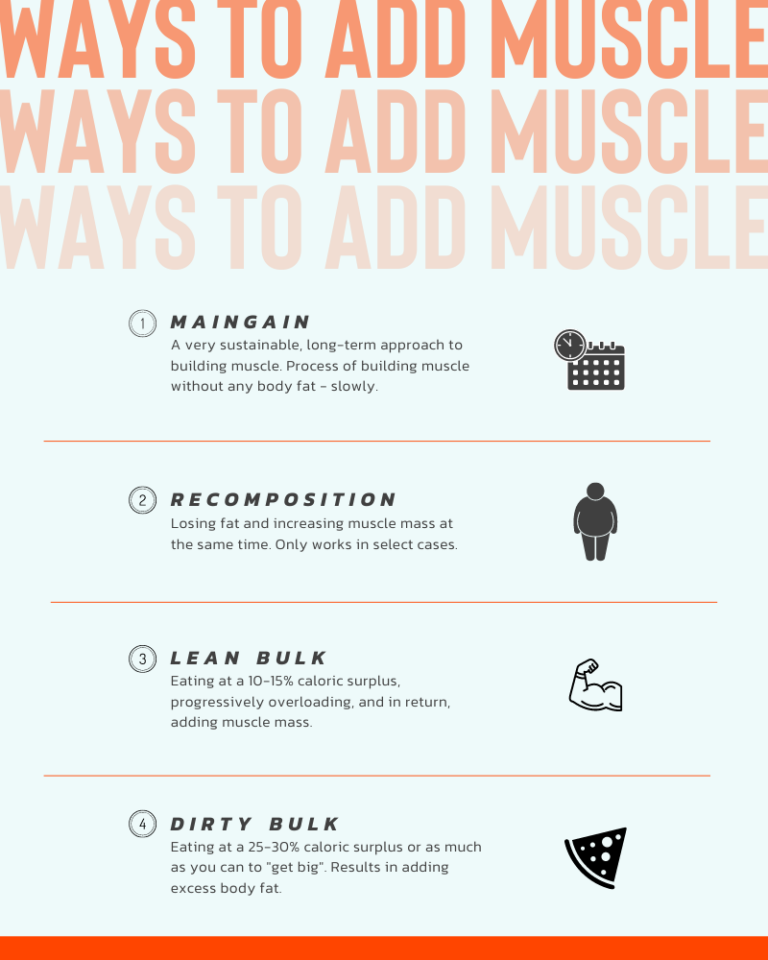HOW TO LEAN BULK

THE LIMITS OF BULKING AND CUTTING
OTHER WAYS TO ADD MUSCLE

Well what about recomposition?
How about a lean bulk?
Contrast this with the dirty bulk.
TIME TO MAINGAIN

DO I NEED TO CUT CALORIES TO SHOW MUSCLE?

WHO IS MAINGAINING FOR?
Let’s begin with who should NOT go the maingaining route:
Who should consider maingaining?
Who is PERFECT for maingaining:
WHAT’S THE BEST TRAINING APPROACH TO MAINGAIN?

So long as you are lifting weights and training harder than last time, you can do what you love. CrossFit, Bodybuilding, Functional Bodybuilding, or even things like Powerlifting and Olympic Lifting.
SHOULD YOU LIMIT CARDIO?

HOW DO YOU FIGURE OUT YOUR MACROS?
You can use a macro calculator like our free one. Input your activity level and body metrics, and then use the maintenance calories. I suggest sticking to the 1 gram of protein per pound of body weight approach. Fill the rest in with no less than 40% of your calories from carbs and the rest from fats.
IS THIS LIKE REVERSE DIETING?
REMEMBER THE MAGIC INGREDIENT

